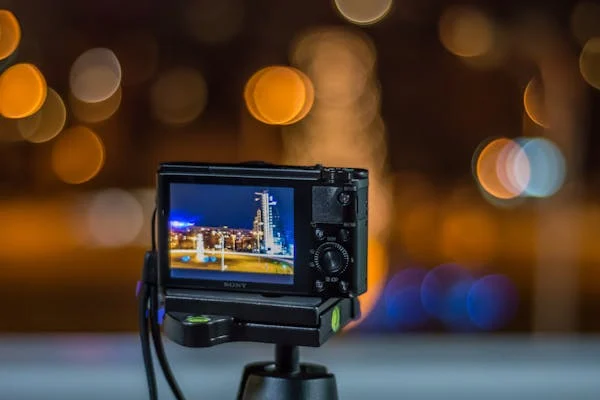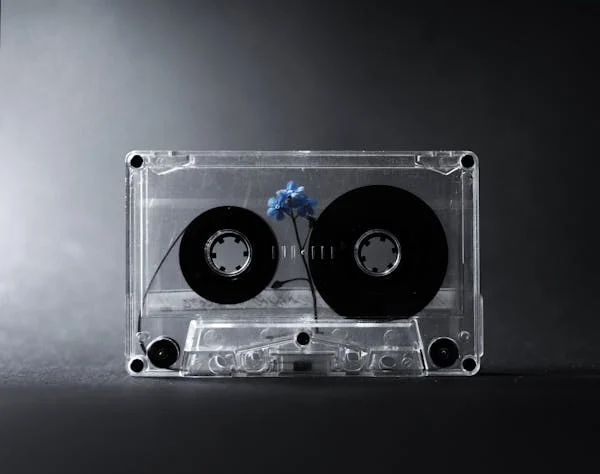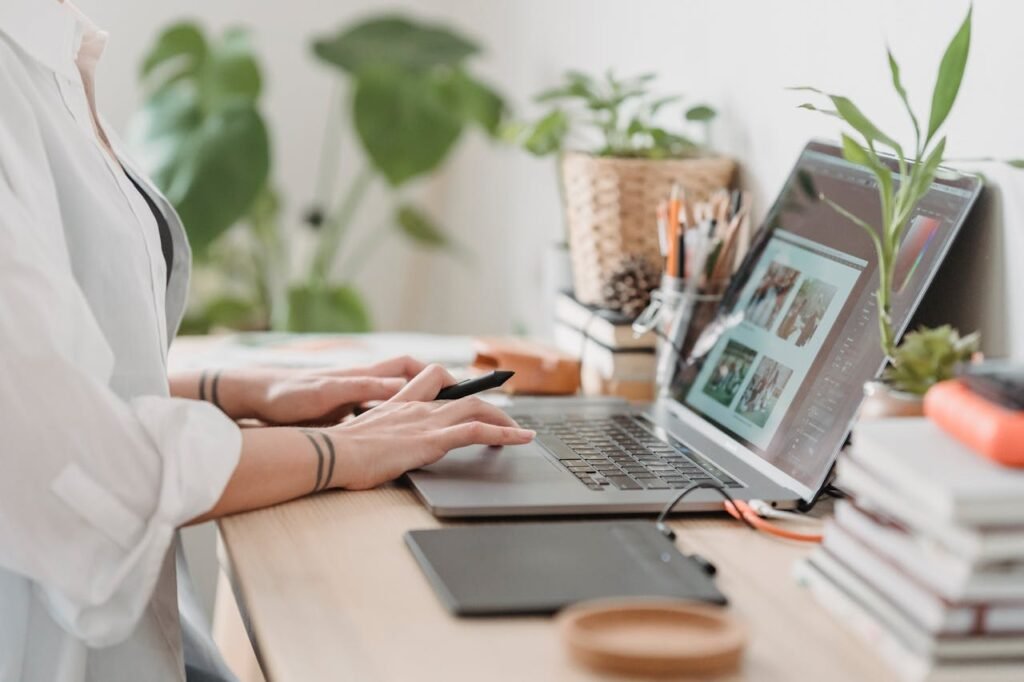Mixed media art is a fantastic way to unleash your creativity. By combining different materials and techniques, you can create unique and stunning pieces. This art form is perfect for beginners because it doesn’t require you to stick to one method. You can experiment, play around, and let your imagination run wild. In this guide, we’ll explore how to start with mixed media art, including essential supplies, techniques, and project ideas. Let’s dive in!
Understanding Mixed Media Art

What is Mixed Media Art?
Mixed media art involves using more than one medium or material in a single piece of artwork. This could mean combining paint with fabric, paper with ink, or adding textures like sand or beads. The beauty of mixed media is that there are no strict rules. It’s about exploring different combinations and creating something that is uniquely yours.
Why Try Mixed Media Art?
Mixed media art is great for beginners because it allows for flexibility and creativity. You don’t need to be skilled in any one technique. Instead, you can combine different elements to see what works best. This art form also encourages recycling and using everyday items, making it an affordable hobby. Plus, it’s incredibly fun and satisfying to see how different materials come together to form a cohesive piece.
The Strategic Advantage of Mixed Media Art
For startup founders, engaging in mixed media art can be more than just a hobby; it can be a strategic tool for fostering creativity and innovation within your team. Here’s how you can leverage mixed media art to benefit your business:
Fostering a Creative Environment
Encouraging your team to explore mixed media art can help create a culture of creativity and innovation. Allocate a space in your office where employees can experiment with different materials and techniques. This creative outlet can lead to new ideas and fresh perspectives that can be applied to your business challenges. Hosting regular art sessions can also serve as team-building exercises, enhancing collaboration and communication among team members.
Enhancing Problem-Solving Skills
Mixed media art requires thinking outside the box and finding creative solutions to combine different materials. This kind of problem-solving is directly transferable to the business world. By engaging in mixed media projects, your team can develop the ability to approach problems from multiple angles and come up with innovative solutions. This strategic skill can give your startup a competitive edge.
Boosting Employee Morale and Productivity
Art has been proven to reduce stress and increase overall well-being. Providing your team with the opportunity to engage in mixed media art can boost morale and enhance productivity. Happy and relaxed employees are more likely to be productive and come up with creative solutions. Consider implementing regular art breaks or creative sessions as part of your workplace wellness program.
Strategic Implementation in Marketing
Mixed media art can also play a crucial role in your marketing strategy. Here’s how:
Creating Unique Marketing Materials
Stand out in the crowded marketplace by incorporating mixed media art into your marketing materials. Use different textures, colors, and materials to create eye-catching brochures, business cards, and promotional items. Unique, tactile materials can leave a lasting impression on potential clients and partners. You can even use elements of your team’s mixed media projects to personalize your marketing materials, adding a touch of authenticity and creativity.
Engaging Social Media Content
Mixed media art provides endless possibilities for creating engaging social media content. Document the process of creating mixed media pieces and share it with your audience. People love behind-the-scenes content and seeing the creative process. You can also host art contests or challenges on your social media platforms to increase engagement and build a community around your brand. Use mixed media art to tell your brand’s story in a visually compelling way.
Practical Steps for Startup Founders
Here are some actionable steps to incorporate mixed media art into your startup:
Start Small
You don’t need a huge budget to get started. Begin with basic supplies like paper, paint, and glue. Encourage your team to bring in materials they have at home, such as old magazines, fabric scraps, and found objects. The goal is to get everyone involved and comfortable with the process.
Set Up a Creative Space
Designate a specific area in your office for mixed media art. Make sure it’s well-stocked with supplies and has plenty of space for your team to work. Encourage employees to use this space regularly and make it a part of your office culture.
Integrate Art Sessions into Your Routine
Schedule regular art sessions where your team can come together to create mixed media projects. These sessions can be as formal or informal as you like. The key is consistency and creating a routine that everyone looks forward to.
Showcase the Artwork
Display the mixed media art created by your team around your office. This not only beautifies the workspace but also instills a sense of pride and accomplishment in your employees. You can also share the artwork on your social media platforms, showcasing the creativity and innovative spirit of your team.
Measure the Impact
Keep track of the impact that engaging in mixed media art has on your team. Look for improvements in creativity, problem-solving, morale, and productivity. Collect feedback from your employees about their experience and make adjustments as needed to maximize the benefits.
By strategically incorporating mixed media art into your startup, you can foster a creative and innovative culture, enhance problem-solving skills, boost employee morale, and create unique marketing materials. This multifaceted approach can provide your business with a competitive advantage and contribute to your overall success.
Essential Supplies for Mixed Media Art
Basic Materials
To start with mixed media art, you need a few essential supplies. A sturdy surface is crucial; this could be a canvas, a wooden board, or heavy paper. Adhesives like glue sticks, Mod Podge, or gel medium will help you attach different materials.
Acrylic paints are versatile and work well with various other mediums. Brushes in different sizes will allow you to create different effects. Having a variety of papers, such as scrapbook paper, old book pages, and tissue paper, can add interesting textures and patterns to your artwork.
Additional Supplies
Once you have the basics, you can add other materials to expand your creative possibilities. These can include ink, markers, and crayons for drawing and adding details. Fabric and lace can add texture and depth. Found objects like buttons, beads, and feathers can make your pieces stand out. Don’t forget tools like scissors, a craft knife, and a cutting mat for precision cutting.
Techniques to Explore
Layering
Layering is a fundamental technique in mixed media art. Start with a base layer of paint or paper, then build up your piece by adding different materials. Each layer adds depth and interest. You can use thin layers of paint, translucent papers, or even fabric to create a rich, complex background.
Collage
Collage involves cutting and pasting different materials onto your surface. This can include photos, magazine cutouts, fabric scraps, or anything else that catches your eye. The key to a successful collage is arranging the elements in a way that creates a pleasing composition. Experiment with different layouts before gluing everything down.
Stamping and Stenciling
Stamps and stencils are great tools for adding patterns and textures to your mixed media art. You can buy pre-made stamps and stencils, or create your own using household items. Use ink or paint to apply the designs to your artwork. Layering different stamps and stencils can create intricate and beautiful effects.
Texture Creation
Adding texture is a great way to make your mixed media art more interesting. You can use materials like sand, beads, or modeling paste to create raised areas on your surface. Apply these materials with a palette knife or your fingers, and let them dry before adding more layers on top.
Painting
Incorporate different painting techniques into your mixed media art. Acrylic paints are particularly versatile and can be used in many ways. Try dry brushing for a scratchy, textured look, or use a wet brush for a smoother, blended effect. Experiment with different brushes and tools to see what kinds of marks you can create.
Strategic Techniques for Startup Founders
Visual Storytelling
Use mixed media art to visually tell your brand’s story. Combine different materials that represent your startup’s journey, values, and mission. For instance, use old documents or blueprints as a base layer to symbolize your company’s origins. Layer on elements like product samples, photographs of key moments, or sketches of your future vision. This not only creates a visually compelling piece but also serves as a powerful storytelling tool for presentations and marketing materials.
Branding with Mixed Media
Integrate your brand’s colors, logos, and themes into your mixed media projects. This can be particularly effective for creating unique and memorable office decor, promotional materials, or social media content. Use consistent colors and motifs across different pieces to create a cohesive brand aesthetic. This strategic use of mixed media art reinforces your brand identity and makes a strong visual impact on clients and partners.
Team Collaboration Projects
Foster collaboration and creativity within your team by organizing mixed media art projects. Assign each team member a specific aspect of a larger piece, such as a section of a mural or a page of a company art journal. This encourages teamwork and allows everyone to contribute their unique perspective. The final product will not only be a beautiful piece of art but also a testament to your team’s collaborative spirit.
Innovation Workshops
Incorporate mixed media techniques into your innovation workshops. Use art as a brainstorming tool to visualize ideas and concepts. Provide a variety of materials and encourage participants to create mixed media mood boards or prototypes of their ideas. This hands-on approach can spark creativity and lead to innovative solutions. Plus, it can break down barriers and foster open communication among team members.
Personalized Client Gifts
Create personalized mixed media art pieces as gifts for your clients. Incorporate elements that are meaningful to the client, such as their logo, colors, or industry-specific materials. This personal touch shows your clients that you value their partnership and are willing to go the extra mile to build a strong relationship. It also serves as a unique and memorable gift that sets your startup apart.
Practical Steps for Implementing Techniques
Set Clear Goals
Before starting a mixed media project, set clear goals for what you want to achieve. Whether it’s a team-building exercise, a branding piece, or a client gift, having a clear objective will guide your creative process. Communicate these goals to your team to ensure everyone is on the same page.
Allocate Time and Resources
Allocate specific times for mixed media art sessions and ensure you have the necessary resources. This includes materials like paints, papers, adhesives, and found objects, as well as tools like brushes, scissors, and cutting mats. Having a well-stocked creative space will make it easier for your team to dive into their projects.
Encourage Experimentation
Encourage your team to experiment with different materials and techniques. Mixed media art is all about exploring new possibilities and pushing creative boundaries. Create a supportive environment where mistakes are seen as opportunities for learning and growth. This will foster a culture of innovation and creativity within your startup.
Document the Process
Document the creative process of your mixed media projects. Take photos and videos of different stages, from initial brainstorming to the final piece. This documentation can be used for marketing content, internal presentations, and as a record of your team’s creative journey. Sharing this process with your audience can also increase engagement and provide insight into your company’s innovative culture.
Review and Reflect
After completing a mixed media project, take time to review and reflect on the experience. Discuss what worked well and what could be improved. Gather feedback from your team and use it to refine your approach for future projects. This reflection process will help you continuously improve and make the most of your mixed media art initiatives.
By strategically incorporating these mixed media techniques into your startup, you can enhance creativity, foster collaboration, and create unique marketing materials. This approach not only benefits your team’s well-being and productivity but also strengthens your brand identity and client relationships.

Project Ideas for Beginners
Creating a Simple Mixed Media Collage
One of the easiest ways to start with mixed media art is by creating a simple collage. Begin with a sturdy surface like a canvas or thick paper. Apply a base layer of acrylic paint and let it dry. Once dry, start adding your collage elements. Use old magazine cutouts, scrapbook paper, and fabric scraps. Arrange them on your surface to create an interesting composition. Once you’re happy with the arrangement, glue everything down. Add more layers of paint, stamps, or stencils to enhance the piece.
Making a Textured Landscape
Creating a textured landscape is a great way to explore different materials. Start with a base layer of paint to establish the background. For the ground, use modeling paste mixed with paint to create a raised texture. Apply it with a palette knife to simulate the look of earth or sand. For the sky, use thin layers of tissue paper or gauze to add depth. Add details like trees or buildings using fabric scraps or paper. Finish the piece with some dry brushing to highlight the textures.
Designing Abstract Art with Found Objects
Abstract art is perfect for beginners because there are no rules. Start with a blank canvas and apply a base layer of paint. Once it’s dry, start adding found objects like buttons, beads, and feathers. Arrange them in a way that feels balanced to you. Glue them down and add more paint or ink to tie the elements together. Use stamps, stencils, or even your fingers to create interesting patterns and textures.
Creating a Mixed Media Portrait
If you’re feeling more adventurous, try creating a mixed media portrait. Start by sketching a simple outline of a face on your canvas or paper. Use acrylic paints to add basic colors and shapes. Once the paint is dry, start adding collage elements. Use paper, fabric, and found objects to create the hair, clothing, and background. Add details with ink or markers. The key to a successful mixed media portrait is to let each layer dry before adding the next one.
Making a Mixed Media Journal
A mixed media journal is a great way to practice different techniques. Start with a blank journal and choose a theme for each page. For example, one page could focus on layering, while another could explore texture creation. Use a variety of materials and techniques on each page. This not only helps you practice but also creates a beautiful, personalized journal that you can look back on for inspiration.
Tips for Success
Strategic Tips for Startup Founders
Integrate Mixed Media Art into Company Culture
Promote creativity and innovation within your startup by integrating mixed media art into your company culture. Encourage your team to engage in art projects and display their work around the office. This not only beautifies the workspace but also fosters a creative atmosphere that can inspire new ideas and innovative thinking. Consider setting up a dedicated art space where employees can experiment with different materials during breaks or after work.
Use Art as a Team-Building Activity
Organize mixed media art sessions as part of your team-building activities. These sessions can help break down barriers between team members, encourage collaboration, and boost morale. Working together on a creative project allows employees to see each other’s strengths and talents in a new light, which can enhance teamwork and communication in the workplace. Plan regular art workshops or retreats where your team can explore mixed media techniques together.
Encourage Personal Expression
Allow your team members to express their individuality through their art. Encourage them to bring in personal items or materials that have special meaning to them and incorporate these into their mixed media projects. This personal touch can make the artwork more meaningful and reflective of your team’s diverse backgrounds and perspectives. By valuing and showcasing each team member’s unique contributions, you can create a more inclusive and supportive work environment.
Utilize Art for Stress Relief
Incorporate mixed media art into your wellness programs as a way to reduce stress and promote mental health. Provide materials and space for employees to engage in art during their breaks. Art has been shown to have therapeutic benefits, helping to reduce anxiety and improve overall well-being. By offering creative outlets for stress relief, you can help your team maintain a healthy work-life balance and prevent burnout.
Showcase Art in Marketing and Branding
Leverage your team’s mixed media art in your marketing and branding efforts. Use their creations as unique visuals for your website, social media, and promotional materials. This not only sets your brand apart but also highlights the creativity and innovation of your team.
Share the stories behind the artwork to give your audience a deeper connection to your brand. Consider creating a gallery section on your website where you can showcase your team’s artwork and celebrate their creativity.
Practical Steps for Implementation

Set Clear Objectives
Before starting any mixed media project, set clear objectives that align with your business goals. Whether it’s improving team morale, fostering creativity, or creating unique marketing materials, having a defined purpose will guide your efforts and ensure that the project delivers value to your startup.
Allocate Resources and Time
Ensure you allocate adequate resources and time for mixed media art projects. This includes providing a variety of materials and tools, as well as scheduling regular art sessions. Make art a priority by incorporating it into your team’s routine, whether through weekly creative breaks or monthly workshops. Having a well-equipped and dedicated space for art will make it easier for your team to engage and stay motivated.
Promote an Open Mindset
Encourage an open mindset towards mixed media art within your team. Foster a culture where experimentation is valued, and mistakes are seen as learning opportunities. This approach will help your team feel more comfortable exploring new techniques and materials without the fear of failure. Celebrate the process of creation as much as the final product.
Create Opportunities for Skill Development
Offer opportunities for skill development by providing access to workshops, online courses, and art classes. Bringing in professional artists or instructors to conduct sessions can introduce your team to new techniques and inspire them to push their creative boundaries. Encourage continuous learning and improvement in mixed media art, just as you would in other areas of professional development.
Reflect and Adapt
After completing mixed media projects, take time to reflect on the experience and gather feedback from your team. Discuss what worked well and what could be improved. Use this feedback to adapt your approach and make future projects even more successful. Regular reflection and adaptation will help you maximize the benefits of integrating mixed media art into your startup.
Conclusion
Mixed media art offers a world of possibilities for beginners and experienced artists alike. It allows you to explore different materials and techniques, fostering creativity and innovation. For startup founders, integrating mixed media art into your company culture can provide strategic advantages, from enhancing problem-solving skills to boosting employee morale and creating unique marketing materials.
By following the tips and techniques outlined in this guide, you can get started on your mixed media art journey with confidence. Remember to experiment freely, embrace imperfections, and most importantly, have fun. Use this creative outlet not just for personal growth but also as a powerful tool to inspire and engage your team.
Read Next:
- NAP Citations and Why They Matter for Local Healthcare SEO
- How to Optimize Google My Business for Healthcare
- Local SEO Checklist for Healthcare Providers
- How to Conduct a Content Gap Analysis
- User-Generated Content: A Boon or a Bane?






















Comments are closed.